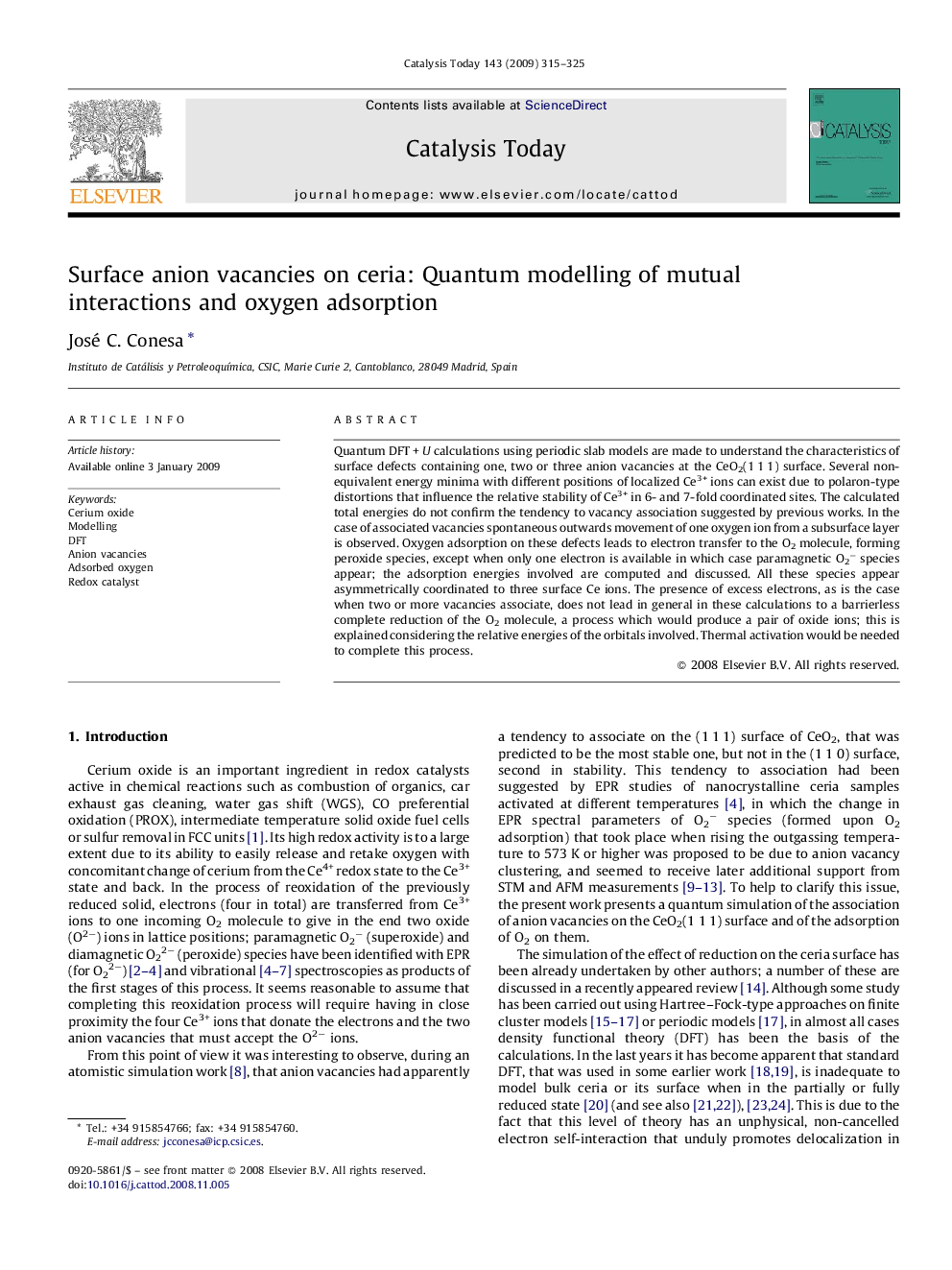| Article ID | Journal | Published Year | Pages | File Type |
|---|---|---|---|---|
| 57142 | Catalysis Today | 2009 | 11 Pages |
Quantum DFT + U calculations using periodic slab models are made to understand the characteristics of surface defects containing one, two or three anion vacancies at the CeO2(1 1 1) surface. Several non-equivalent energy minima with different positions of localized Ce3+ ions can exist due to polaron-type distortions that influence the relative stability of Ce3+ in 6- and 7-fold coordinated sites. The calculated total energies do not confirm the tendency to vacancy association suggested by previous works. In the case of associated vacancies spontaneous outwards movement of one oxygen ion from a subsurface layer is observed. Oxygen adsorption on these defects leads to electron transfer to the O2 molecule, forming peroxide species, except when only one electron is available in which case paramagnetic O2− species appear; the adsorption energies involved are computed and discussed. All these species appear asymmetrically coordinated to three surface Ce ions. The presence of excess electrons, as is the case when two or more vacancies associate, does not lead in general in these calculations to a barrierless complete reduction of the O2 molecule, a process which would produce a pair of oxide ions; this is explained considering the relative energies of the orbitals involved. Thermal activation would be needed to complete this process.
